Coffee equipment brief review and coffee making exchange of small Fuji 200 coffee roaster use evaluation
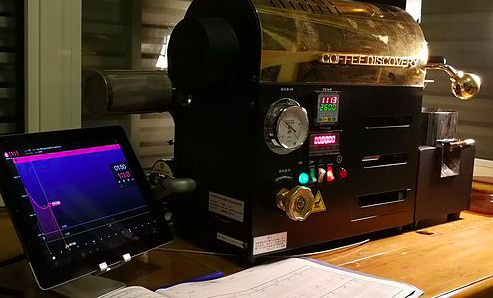
For professional baristas, please follow the coffee workshop (Wechat official account cafe_style)
The so-called coffee roasting, in fact, is to stir-fry the raw seeds of the coffee fruit, so there are a variety of roasting methods, but some are better, some are less effective, some are suitable for shallow roasting, and some are suitable for deep roasting. For example, many people should know that the local people in Ethiopia, the birthplace of coffee, stir-fry coffee beans in an iron pan, which is not the same as drinking every day, so it is not the same as drinking it every day. If it's just for a casual drink, don't think too much about how classy coffee roasting is. So, after introducing today's protagonist roaster, I'm going to talk about cheap baking at home. )
Of course, what modern boutique coffee pursues is particularly subtle aroma, acidity, alcohol thickness, cleanliness, and so on, coupled with the controllability of industrial production, which gives birth to a modern roaster with higher precision and better thermal efficiency. Most of the previous roasters are large kilogram roasters, such as Probat, a brand with a long history, the 30 kilogram roaster 40 or 50 years ago, may still be in service. With the development and growth of boutique coffee, there are more and more coffee roasters adapted to small cafes, small coffee factories, coffee laboratories and even families. The protagonist Fuji Royal Coffee Discovery 200roaster in this paper is such a small roaster with excellent performance, small size and meticulous workmanship. For the sake of simplicity, this machine is called Little Fuji for short. The same manufacturer also has a ghost tooth bean grinder, which is often called Xiao Fuji, but in this article, it is obvious that everyone will not be confused.
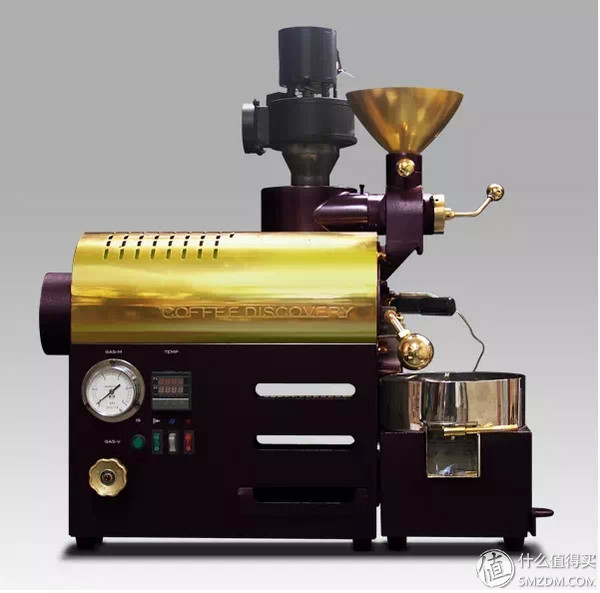
The basic knowledge of coffee roasting
Coffee roasting is the deep water area of the coffee industry. for a barista who does not know how to bake or does not understand baking, it is like drawing on a small piece of paper with a very limited area, and if a practitioner can go from baking to extraction, even to the upstream planting and raw bean processing, it is as if he has opened up the governor's second pulse, so friends who are interested in coffee Even if you don't bake yourself, it's necessary to know the basics of baking if you want to advance. Or in other words, from extraction to baking, it's like jumping from a single dimension to a two-dimensional world, when you know enough about raw beans and baking, and then talk to people who only know about extraction or even pull flowers. You will find that you have easily completed the transcendence (of course, we are not trying to win against each other). Therefore, in this paragraph, because of the above reasons, but also in order for you to understand the following content, I would like to briefly introduce the basic knowledge of baking. Moreover, baking is a matter of opinion. I'm sure a lot of people don't agree, and please don't hesitate to give us advice.
The following is to talk about the most simple concept of baking, already understand the friends do not laugh at me, just skip it.
# #
At the beginning, the coffee beans we drink are the products of heat-treated raw beans, and coffee beans are actually the seeds of coffee fruits, just like Hawthorn or cherry nuts, which are hard. In the place of origin of raw coffee beans, the coffee fruits picked are roasted raw beans after being treated with water, sun, half-sun (honey treatment), isolated oxygen fermentation, etc., and then shelled and initially dehydrated. At this time, raw coffee beans usually contain about 10% water. Raw bean roasting is a continuous process in which raw beans are heated, moisture is gradually removed, coffee bean tissue expands and a series of physical and chemical reactions take place. Personally, I think there are two special keys to coffee roasting, one is dehydration, and the other is heat transfer.

Raw coffee beans
Coffee beans will not be ripe until heated, and there are three main ways of heat transfer: conduction, convection and radiation. Reflected in coffee roasting is mainly divided into contact heat transfer and hot air heat transfer, radiation heat transfer is relatively less, but some modern roasters are already in use, which will be discussed later. The so-called contact heat transfer means that coffee beans absorb heat when they come into contact with the hot container wall of the roaster, and coffee beans transfer heat to each other in contact with each other, while hot air heat transfer mainly refers to the continuous transfer of heat to coffee beans by hot air. Here, many bakers and baking textbooks describe hot air heat transfer as convective heat transfer, which I personally think is wrong. the so-called convective heat transfer means that in a space, heat is transferred from the heat source to the whole space through the medium. the main principle of hot air heat transfer to coffee beans is that hot air wraps the coffee beans, thus transferring heat from the coffee bean surface to the bean core, so I think this is essentially the same as contact heat transfer. Generally speaking, hot air heat transfer is more efficient in heating beans, that is, beans can be baked more thoroughly in less time. The main reason is that the microscopic essence of contact heat transfer is the point contact heat transfer between coffee beans and other coffee beans or drum walls, while hot air heat transfer is that the whole bean table is wrapped, so the efficiency will be higher. Most of the modern roasters are the coexistence of hot air and contact heat transfer. Many good roasters have a heat transfer ratio of 90% of the nominal hot air, but I don't think it can be that high. The heat transfer of hot air is good, but the heat transfer of hot air is not easy to control, and the machine cost is high, and the thickness of alcohol is usually worse than that of the roaster with high contact heat ratio, but if it is well controlled, the effect of the machine with high proportion of hot air will be better. and the biggest problem with many small roasters is the effectiveness of hot air.
Macroscopically, the heat is transferred from the roaster to the coffee beans, and microscopically, the heat of a single coffee bean is transferred from the bean surface to the bean core in a machine with half direct fire and half hot air (that is, a machine that combines hot and hot air heat transfer). If the bean core is not heated enough, it will cause the beans to be raw, green, wood and other flavors, which is the baking defect. The increase of the bean core temperature indicates the degree of heating of the bean core, and the speed of the increase of the bean core temperature is related to two things, one is the temperature difference between the bean surface and the bean core, obviously, the greater the temperature difference, the faster the bean core temperature increases (note that this is based on the heat transfer from the bean surface to the bean core, radiant heat directly heats the bean core, which is not within the scope of this discussion) The other is water as a heat transfer medium (it is generally believed that water has a heat transfer effect, of course, professional baking classes will put water into bound water and free water, so let's not talk about it here.) the more water, the faster the bean core temperature rises.
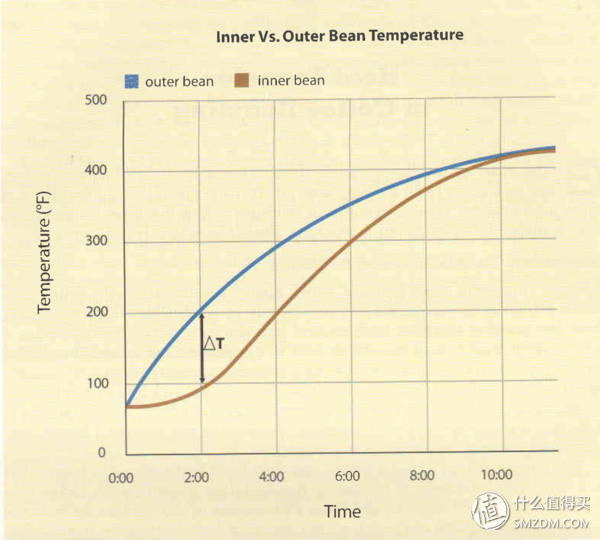
Change of temperature difference between surface and core of beans during baking
Speaking of which, the reason why the two key points were critical should be very clear. As the temperature rises, the beans gradually lose water, which is needed by the heat of the bean core, but we can't retain too much water. Too little dehydration can still cause a series of taste problems. Therefore, how to make the temperature of the bean core catch up with the temperature of the bean surface in the process of gradually reducing the temperature difference between the bean surface and the bean core, and the dehydration degree is just right, becomes the main problem to be solved in coffee roasting. In specialty coffee, keeping just the right amount of moisture after roasting is also important, and that moisture largely determines whether we want the floral aromas to appear.(Note that it is not the water left that is equal to the fragrance of flowers and fruits, but the water that has been evaporated and consumed by chemical reactions in the dehydration process determines the fragrance of flowers and fruits). In other words, the flavor of origin of fine coffee has a lot to do with the degree of dehydration (here is a brief description, in fact, there are many factors related to flavor, such as too deep roasting will also consume the flavor that has been generated, and here is the core of dehydration and heating).
Now, friends who have no baking foundation before should already understand that what we have to do is to control the contact heat and heat heat transferred to the coffee beans by the coffee roaster, so that the coffee beans can be properly dehydrated, heated and expanded and ripened within a certain period of time.
Generally speaking, the roasting of green coffee beans will go through several continuously changing processes: The green beans soften from light green, then white, then yellow, then light brown, and like popcorn, the water inside the coffee beans expands out of the coffee beans, and the coffee beans burst. This is called the first burst. After the first burst, if the beans continue to be heated, the beans will go through a certain period of dormancy until they absorb enough heat to cause the fibers inside the coffee beans to collapse. It sounds like another burst, or second burst. Generally speaking, the first and the second explosion include three stages: initial explosion, explosion density and explosion end. Therefore, in general, the roasting process of coffee beans is: softening, whitening, yellowing, browning, first explosion start, first explosion intensive, first explosion end, quiet period, second explosion start, second explosion intensive, second explosion end, complete carbonization. Different countries, different baking styles of people, the definition of baking degree is different, Nordic people say that the beginning of the second explosion is deep baking, while the Japanese will think it is light baking. Therefore, it is better to define the baking degree by the above baking stage (of course, the baking degree and taste are different at different heating rates, even if they are all the same stage, so let's not take it seriously here, just understand what I mean). Generally speaking, the baking degree at the end of the first explosion is called City (City Roast), the baking degree at the end of the first explosion but not yet at the end of the first explosion is called City-, and the baking degree in the quiet period between the first explosion and the second explosion is called City+ to Full City, and the baking degree after the second explosion is usually called Full City+ to French Roast or Italien Roast. Of course, a more scientific way to define baking degree is to use bean and powder colors, but that requires equipment, so we won't go into it for the time being.
(See Sweet Mary's description for baking degree and name.)
For a typical semi-direct fire semi-hot air coffee roaster, the control place is usually the fire and damper, the fire refers to the degree of heating under the drum, and the damper refers to the degree of exhaust gas from the inside of the drum. If it is a natural gas or liquefied petroleum gas burning machine, the gas pressure represents the firepower, and the scale of the damper represents the degree of exhaust. On the one hand, the function of the damper is to exhaust the moisture and smoke in the coffee roasting process. If there is no exhaust, the coffee taste mixed with smoke and moisture can be imagined. If there is no exhaust, it will also cause the hot air in the furnace not to circulate, which will also cause insufficient thermal efficiency. If there is too much exhaust, there will be heat along with the exhaust gas. A lot of heat runs away, and the thermal efficiency is still insufficient. Another point is that the source of hot air is room temperature air through the fire under the drum, if the damper is too big to cause the wind into the wind is too large, then the hot air temperature into the drum will be insufficient, the same thermal effect is poor. If you feel that the hot air temperature is not enough at this time, you want to increase the firepower, then you will face the problem that the firepower is too large to cause the drum wall to overheat (especially the drum with a single furnace wall), and the proportion of contact heat will increase greatly. The beans will explode very quickly, and the beans will be burnt. The bean core is not cooked. So you can see that coffee roasting is a process of finding the right one, too much, and as the beans heat up, the right proportion of wind and fire at each stage is different, which is the core of coffee roasting.
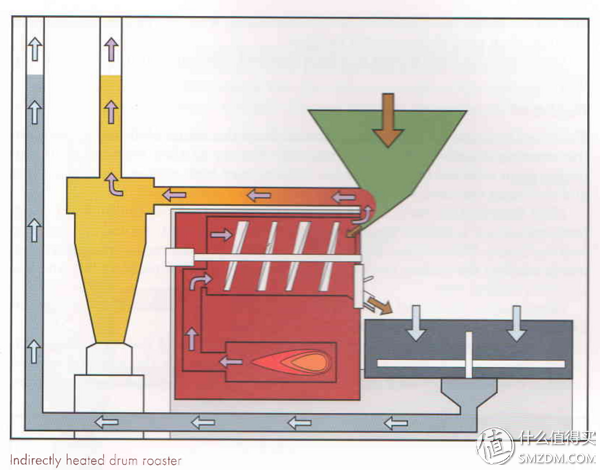
Schematic diagram of semi-direct fire and semi-hot air coffee roaster
In order to control coffee roasting, roasters have temperature measuring points. They usually measure the temperature of beans in the drum (in fact, the temperature of the mixture of beans and hot air in the furnace) and the temperature of exhaust air (some also measure the temperature of inlet air). Traditional bakers use a pen to record the temperature of coffee beans every minute or even every 30 seconds, and calculate the heating rate at the same time, so as to control the pace of roasting, but now this work is usually replaced by computer automatic recording. The software will constantly measure the temperature and draw it on the right-angle coordinate system, which is the coffee baking curve.
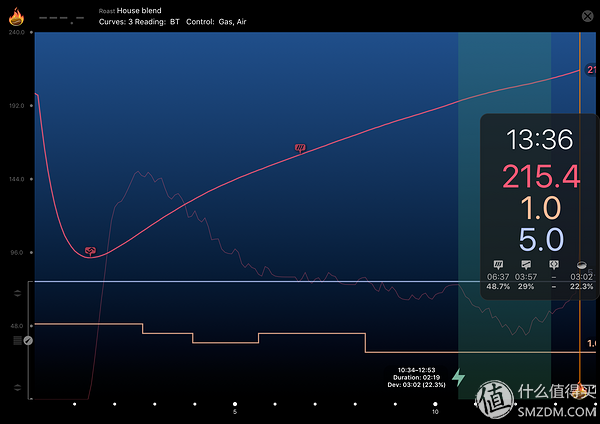
The above is the most superficial concept of coffee roasting, although it is not difficult, to be clear is still a challenge, although simple, but also enough to let friends who have not come into contact with roasting to understand the following.
Second, the basic characteristics of the small Fuji roaster
I think the advantages of Xiao Fuji roaster are outstanding, but the disadvantages are not obvious, so this time my title is "characteristics" rather than "advantages" or "disadvantages". The most prominent feature of this machine is its high thermal efficiency. For a small roaster, hot air is the most difficult problem to solve. For example, if I were a designer of a small coffee roaster, I would face a lot of problems, and the incomplete examples I can think of are as follows: compared with ultra-small boilers, how to design the exhaust fan? so that it can take into account the different roasting degrees of different coffee roasting, will not run too much heat and not enough hot air circulation will not cause ineffectiveness. How to design the firepower and fire row so that the inner wall of the single-layer boiler will not overheat and provide enough heat for the hot air; how to select the material of the boiler to make its thermal efficiency high enough; how to design the fan page inside the boiler? make the three-dimensional path of coffee beans in the inner pot uniform and stable. Despite the fact that the above problems only involve the parts of fire, pot and wind, but this is actually the core of a roaster.
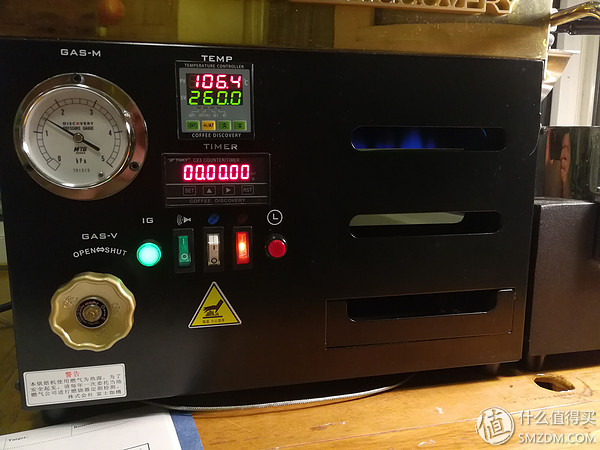
I found that Xiao Fuji's solution is like this:
1. The inner pot uses a shaftless inner pot, that is to say, there is not a horizontal shaft connecting the bearings at both ends in the inner pot, so that the movement of beans in the inner pot is less hindered, and the flow of hot air is more smooth and the thermal effectiveness is higher. In this way, you don't have to have too much firepower, and still produce a good hot air effect.
two。 The height of the fire discharge from the inner pot is higher, that is to say, the fire is far away from the outer wall of the inner pot, which reduces the proportion of contact heat, increases the proportion of hot air heating, and alleviates the problem that the contact heat ratio of single-layer inner pot is too high.
3. The wind power of the fan is relatively small, which should be calculated by the engineer. We should know that the biggest problem with many domestic roasters is that the exhaust air is too large relative to the size of the inner pot and firepower, and such a large throttle will seriously affect the effectiveness of the hot air.
All of the above, coupled with the specially designed inner pot (it is said that the two ends of the small Fuji inner pot will turn blue after being used for a period of time, which is a sign of high thermal efficiency, and I don't know exactly why). As long as you don't pursue extreme baking tempo (such as very fast or slow baking), you don't have to worry about baking. The throttle of little Fuji has a total of 5 bars, 1 is the smallest and 5 is the largest. My experience is that after the coffee turns yellow, if the firepower remains the same or even slightly reduced, even if the wind is suddenly adjusted from 3 to 5 (note that 5 is the maximum throttle), the heating rate of beans will obviously rise for quite a long time instead of falling. Personally, I think this is a sign of the effectiveness of hot air. Because the beans turn yellow, due to the loss of part of the water, it is not so easy to heat.
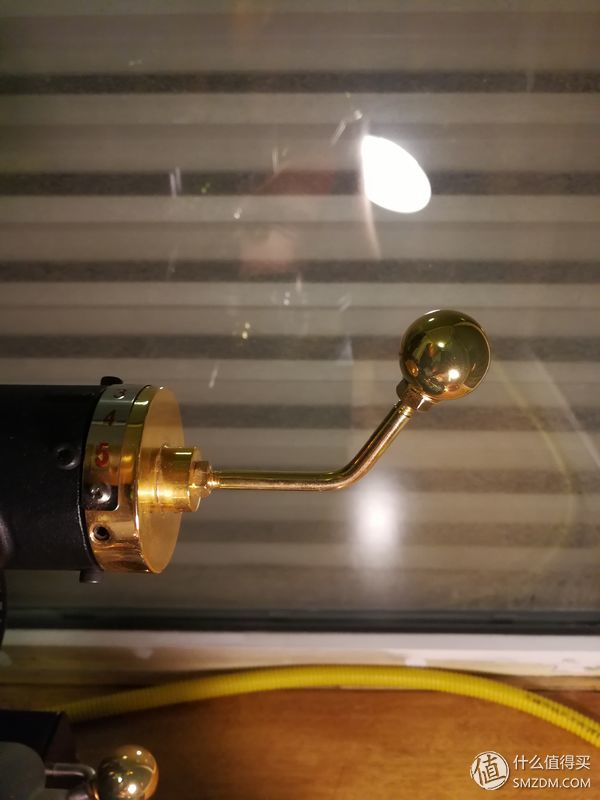
Throttle 1-5
Operation, the small Fuji firepower adjustment knob is very comfortable, damping is just right, can be very accurate and convenient to adjust to the scale you want, not easy to have errors, relative to the HB roaster is by adjusting the operation knob to rotate the corresponding valve opening and closing degree to achieve accurate control, and South Korea's Tae-hwan is particularly difficult to use, do not pay attention to will be adjusted. Although the 5-grid throttle can not be accurately adjusted like many roasters, but because of its good hot air efficiency, the roaster is also relatively small, the throttle usually does not have to move too frequently, 5 is enough.
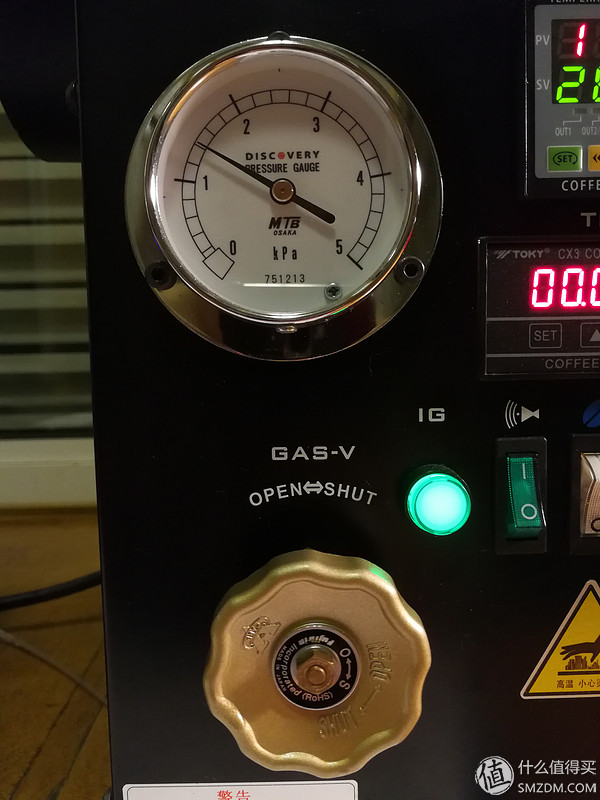
The firepower adjustment is easy to use.
In addition, the heat capacity of the small Fuji machine is not large, the actual use of the medium heat engine and cooling very fast, can significantly reduce the time between each pot. Many machines with small heat capacity of the inner pot do not have high thermal efficiency (because they have to constantly fight against the loss of temperature of the inner pot), but I did not notice this on the small Fuji roaster, which is something I have not figured out yet.
Little Fuji also has two inadequacies. First, there is no external output curve, which can be matched officially, but it needs more than 10,000 yuan, and it can only use official software, which is not easy to use. Second, there is no exhaust temperature probe, although most of the time baking does not need to look at the exhaust temperature, but I sometimes hope to do a reference in adjusting the throttle, there is still a bit of imperfection without air temperature display. The solution is as follows: disassemble the machine, connect an acquisition line in parallel where the bean temperature probe is connected with the display panel, and connect it to the output device. My output device is recognized as a good BlueTherm Duo Bluetooth thermometer, which can be connected with iPad Bluetooth, and then collect the curve with Roastmaster. If you want to measure the exhaust temperature, you have to punch holes in the machine, and I'm still hesitant to implement it.
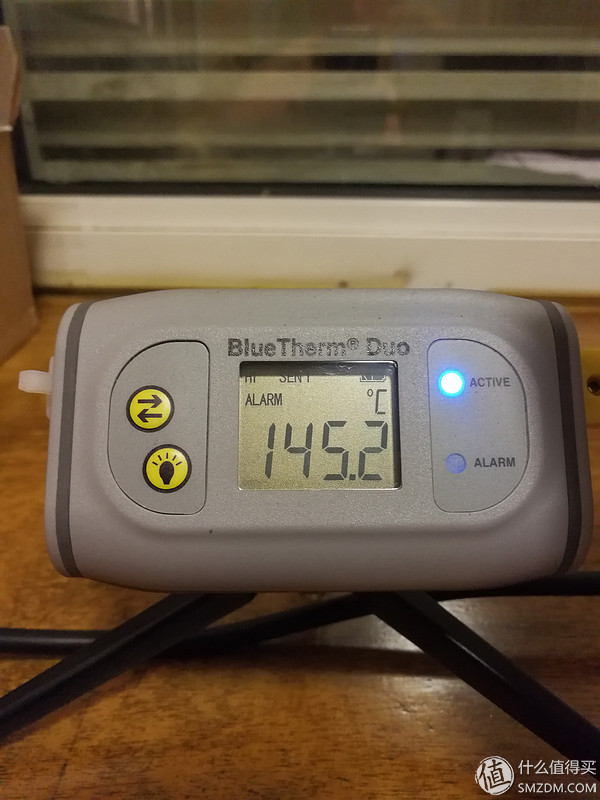
BlueTherm Duo
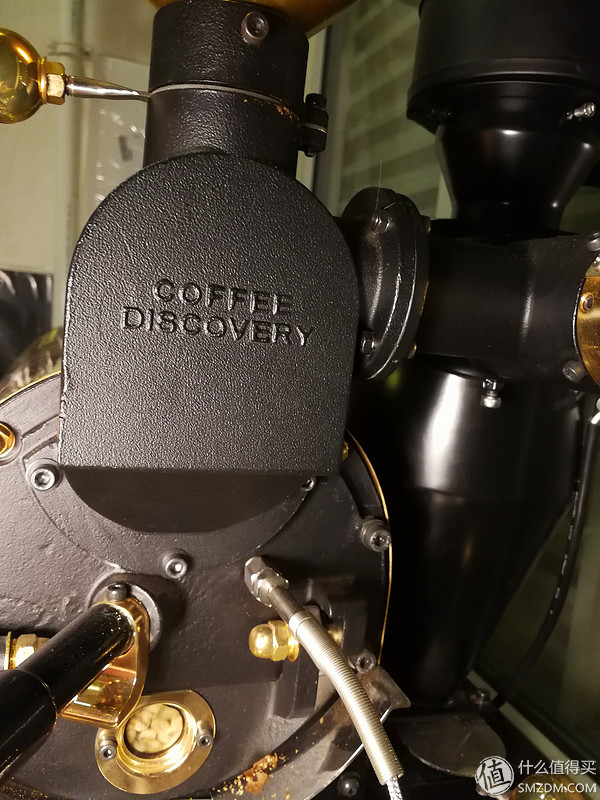
No air temperature probe.
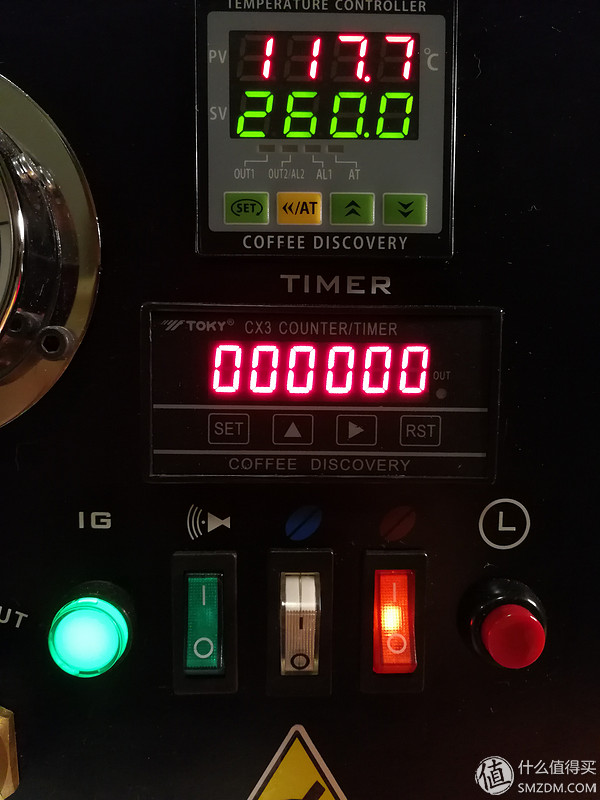
Only bean temperature display, no wind temperature display
Of course, although such a small machine, nearly 50,000 yuan price is enough to make people speechless, but and Probat this hot air efficiency is high, and stable and controllable compared to the machine is definitely insufficient, of course, those machines are not under 100,000. However, as long as you bake properly, small Fuji can also be the ultimate choice. In the words of a friend of mine, it can satisfy all your fantasies about baking machines. And I, far from the machine to play to the extreme, is still in the process of exploration.
Other suggestions for home coffee roasting
At first, there are many ways to roast coffee beans. In fact, it is not necessary to have expensive modern roasters. After all, we humans have been drinking coffee for so many years. It is impossible to have such machines before.
The baking method that can balance baking quality and low price at home may be known to everyone, that is, hand net baking. I assure you that as long as the green beans are of good quality, the roasting technique is in place, the equipment is selected properly (all very cheap), and the roasting method is correct, you can definitely roast coffee beans comparable to roasters. My brief points from experience are as follows: Do not turn on the range hood, use an electric stove above 3000W (Do not use natural gas stove or liquefied gas stove, there will be smell and unstable firepower), buckle a bottomless iron pan with a small top and a large bottom, and leave a gap of about 3 cm where it contacts the electric stove, so as to form a hot air circulation from bottom to top. Set up a long enough length on the side of the electric stove to mark the distance between the hand net and the heat source, so as to control the firepower. According to the principle that the heat is transferred from the bean surface to the bean core as I mentioned above, Reasonable planning of roasting rhythm (my experience is that the general yejia sherry 6 minutes yellow, 9 minutes a burst, actually must be adjusted according to the raw beans soft and hard, old and new, size, processing method), then you can certainly roast clean and amazing coffee beans. The specific hand net baking method is available online, so I won't go into details. Right, the hand net is three snow is good, there is a large one small, small one 100g, large (that is, the one used by Taguchi) 150g. In addition, I can also tell you a tip, before roasting coffee beans, put them in a flat layer in the microwave oven for a minute, and then roast, the effect is particularly good, specifically why interested in the comments can ask me. If you have a slow cooker at home, vacuum the raw beans and cook them slowly for a while before baking, which works well.
If you think this is too difficult to test skills, you can also try to bake in the oven, but if you want the effect to be good, heat the upper and lower pipes at the same time, turn on the hot air, adjust the fire to the appropriate baking rhythm, and it is best to change the rotation motor of the rotating cage to a faster one. However, there is a problem with the oven, that is, it is difficult to lower the temperature of the heating tube after it goes up, which makes it difficult to reduce the fire. This is also a common problem of electric professional baking machines.
In fact, as long as you don't demand too much flavor and delicate taste, fresh coffee beans will definitely taste better than the old beans you drank before. From this perspective, I actually support my own home roasting of my own coffee beans, which is not too demanding, and I can also accumulate roasting knowledge, so why not do it. Of course, the silver skin flying all over the sky may take a while to clean up.
Important Notice :
前街咖啡 FrontStreet Coffee has moved to new addredd:
FrontStreet Coffee Address: 315,Donghua East Road,GuangZhou
Tel:020 38364473
- Prev
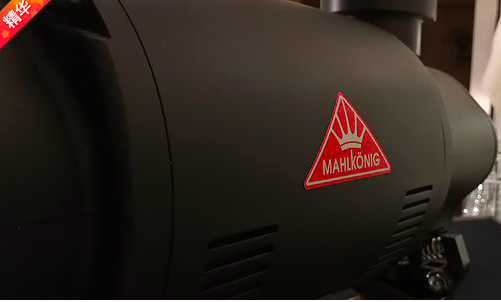
Brief Review of Coffee equipment and Evaluation of the use of Mehdi EKK43T Bean Mill for Coffee making and Communication
Communication of professional baristas Please follow the coffee workshop (Wechat official account cafe_style) I believe that friends who have been getting started for some time have heard the old birds say, never be reluctant to buy a good bean grinder, which contributes more to the product than the coffee machine. In my opinion, do not compare whose contribution is greater, which is a key factor in a good cup of coffee.
- Next
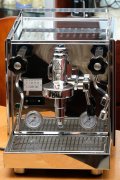
Profitec PRO 700Italian coffee machine and Ditting KE640-out-of-the-box evaluation
Communication of professional baristas Please pay attention to the coffee workshop (Wechat official account cafe_style) originally used Silvia is a single boiler, coffee extraction and steam are heated in the same boiler. If a single boiler is just extraction, it doesn't matter if you just turn a blind eye, but if you want to extract and foam at the same time, you have to wait for the temperature to rise or fall to the temperature you want.
Related
- What is the Philharmonic pressure? How to use Philharmonic pressure to make delicious coffee
- Why does a hand grinder have more fine powder than an electric grinder?
- In addition to the hot mom, what is the difference between the versions of EK43 | ditting and Mahdi ek43?
- What kind of equipment do you need to make coffee by hand? Introduction to novice starter cooking equipment tools
- Espresso needs to be ground how thick and thin scale entry Italian Coffee Machine Bean Grinder investigation and Grinding course
- How much does it cost to open a small private cafe? How much does it cost to learn coffee? How to operate it?
- The difference between the flavor characteristics of hand-brewed coffee and coffee maker is hand-brewed coffee really better than coffee maker? Can I use a coffee machine to make coffee beans by hand?
- The difference between 01 and 02 of hario v60 filter cup what is the difference between 01 and 02 filter cup opening and cooking flavor
- What's the difference between the smart cup and the French kettle? Which is better, the French kettle or the Smart Cup?
- What's the difference between a smart cup and a V60 filter cup? The difference between the taste of smart cup and hand-brewed coffee

